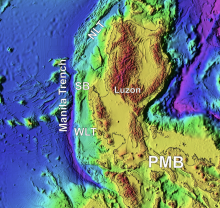Earth Sciences Geology
News
25 Jul 2023
Miyako Islands are home to various native species of snake and lizards. How these species came to call these islands home has long puzzled scientists. A group of researchers from Tohoku University have compiled the latest geological and biological data, proposing that an island once facilitated migration between Okinawa and Miyako Islands.
03 Jul 2023
An international research team has discovered that a subduction zone’s age affects the ability for it to recycle water between the Earth’s surface and its inner layers. The more mature the subduction zone, the bigger the water storage capacity.
27 Jan 2023
A “back-projection” technique reveals new details of the volcanic eruption in Tonga that literally shook the world.
28 Nov 2022
We don’t know much about the Earth’s inner core because recreating its conditions in a laboratory setting remains fraught with difficulties. Based on tracking seismic waves, scientists theorize that the area in and around the core comprises mostly of iron. But the values extracted from these indicators differ from how pure iron typically behaves. Now, a collaborative research group has succeeded, for the first time, in measuring the speed of sound of pure iron under pressures similar to the Earth’s inner core boundary.
25 Oct 2022
Small neighboring galaxy filled with dark matter detected with gamma rays, How a virus induces heart inflammation, Shedding light on the happy hormone, Microfossils may hold key evolution clues. Read all in the October's Editor's Choice plus Upcoming event KNOWLEDGE MARKETPLACE – Bangkok 2022: Exchanging of ideas for a Democratic Myanmar.
05 Sep 2022
The Gunflint Formation, which straddles Lake Superior’s northwestern shore, contains a treasure trove of geological clues about the evolution of life. After a recent geological reassessment of this area, a research team has unearthed new types of microfossils dating 1.9 billion years. The landmark discovery will help scientists pinpoint the timing and factors that ushered in the evolution of prokaryotes to eukaryotes.
10 Mar 2022
The Global Navigation Satellite System associated with a Japanese cell phone carrier can enhance monitoring of crustal deformation changes for earthquake early warning models.
11 Feb 2022
Low volcanic temperature ushered in global cooling and thriving dinosaurs, Broccoli compound induces cell death in yeast, A single molecule makes big splash in quantum mechanics, Dengue virus makes mosquitos bite more often, and Asia Research News: How it all began, all in the February's Editor's Choice
31 Jan 2022
Dinosaurs came to flourish during the Jurassic period after a volcanic eruption roughly 201 millions years ago wiped out many marine and land animals, leaving them able to evolve and grow. Now, further details about this eruption and the mass extinction have been revealed. A group of researchers demonstrated how low temperature magma slowly heated sedimentary rocks, causing high sulfur dioxide and low carbon dioxide emissions, a process which cooled the earth.
22 Apr 2021
An international research team has unearthed more about the crustal growth history of the Central African shield—one of the oldest continental pieces on the planet that formed part of the supercontinent Columbia.
24 Oct 2019
Fossil coral records provide new evidence that frequent winter shamals, or dust storms, and a prolonged cold winter season contributed to the collapse of the ancient Akkadian Empire in Mesopotamia.
22 Jan 2018
Geophysical modeling of one of the world’s most important fossil sites reveals the history of the site where early humankind evolved.
Events
Sorry, nothing coming up for this discipline
Researchers
Sorry, nothing coming up for this discipline
Giants in history
Rinchen Barsbold (born 21 December 1935) is a Mongolian palaeontologist and geologist who was instrumental in discovering and recovering one of the largest dinosaur collections in the world from the Gobi Desert in Mongolia and China.















